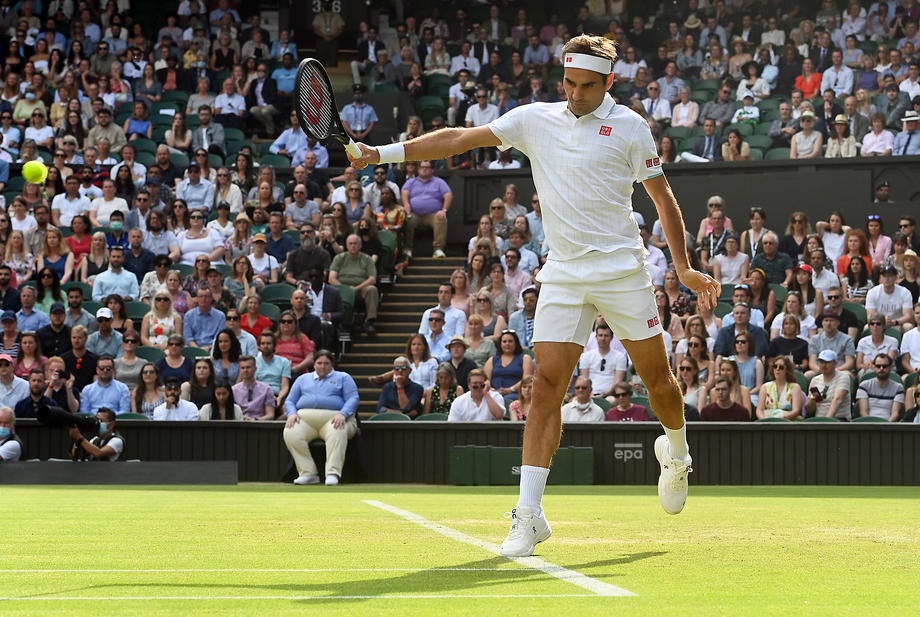- BNP Indian Wells Premium Package Now On-Sale including NOBU
- Ricky’s picks for the 2025 United Cup
- Simona Halep Withdraws from Australian Open Qualifying
- Alex de Minaur and Katie Boulter are Engaged!
- Fonseca wins NextGen, hopes to continue legacy of past champions
- Ricky’s picks for the 2025 Nitto ATP Finals field
- Jenson Brooksby Opens Up on Living with Autism
- Players React to Jakub Menšík Mid-Match Doping Test
- Roland Garros Reveals 2025 Tennis Poster Art
- Simona Halep Receives Australian Open Qualifying Wild Card
- Happy Holidays from 10sBalls Team: Our Wish For You and Yours!
- Sabalenka, Swiatek, Paolini Commit to Dubai Tournament
- Ricky’s picks for the 2024 NextGen ATP Finals in Jeddah, Saudi Arabia
- Tennis Star Genie Bouchard suffers An Eye Injury Playing Pickleball
- Stringlet: Serving Up Tennis Inspiration With A Twist
Alix Ramsay Rambles About The 2019 Aussie Open Tennis • Wednesday In OZ
- Updated: January 16, 2019
Katie Boulter of Great Britain (L) shakes hands with Aryna Sabalenka of Belarus at the net after their match during day three of the Australian Open tennis tournament in Melbourne, Victoria, Australia, 16 January 2019. Sabalenka won the match. EPA-EFE/HAMISH BLAIR
Tennis loves to reinvent the wheel. In the most traditional of sports (cricket is possibly a little more old school but it is touch and go), some numpty always thinks that he or she can make it better, newer, faster and – heaven help us – more “relevant”. Gotta make it relevant in today’s modern world.
So, out goes the Davis Cup; in comes Davis Cup Lite. Out goes the advantage final set, in comes… well, in comes whatever the grand slam de jour likes. Here in Melbourne, we have the 10-point super tiebreak at 6-6 in the final set of both women’s and men’s matches. At Wimbledon a standard tiebreak will come into play at 12-12 in a fifth set and, of course, at the US Open they have had a tiebreak final set for the chaps and chapesses for years. The French, mind you, can’t be doing with change and are sticking to the old ways.
Now, all of this is fine and dandy provided everyone knows the new rules. When Britain’s Katie Boulter claimed her place in the record books by becoming the first player at the Aussie Open to win a match using the super tiebreak, it didn’t go quite according to plan. There she was on Monday, slogging it out with Ekaterina Makarova until, all square in the third set, they started the match-deciding shoot out.

Katie Boulter of Great Britain in action against Aryna Sabalenka of Belarus during day three of the Australian Open tennis tournament in Melbourne, Victoria, Australia, 16 January 2019. EPA-EFE/HAMISH BLAIR
Katie dug in, took the lead and then got herself to 7-4 in the tiebreak. She stopped, she punched the air. She celebrated like a true champion. And then she realised – oops, she hadn’t won. Not yet at least. She did win eventually (10-6 in the decider, if you are taking notes) and that led her to Wednesday’s showdown with Aryna Sabalenka.
That, alas, did not go so well. She was beaten fair and square 6-3, 6-4. That was when it was Sabalenka’s turn to celebrate. In time honoured fashion, she went to her chair and looked for a memento to throw to the crowd. Her headband would do the trick, she thought, so she lobbed it towards the stands. And that was when the trouble started.
Two ladies, both of whom were old enough to know better, lunged for the flying headgear and grabbed it at exactly the same moment. Both thought it was theirs. Neither was going to give an inch. They tugged and they pulled and they fought over this bit of sweaty cloth, fighting so fiercely that, before long, they were surrounded by five security men. Said big blokes relieved them of their trophy and marched them out of the stadium much to the amusement of everyone else. Win or lose, the end of Katie’s matches are clearly worth sticking around for.
But if tennis really wants to make a change, it might consider doing away with the 32 seeds and reverting to the old 16-seed format. Wimbledon toyed with the idea but have, apparently, given up on the idea while the other slams stick doggedly to the first week passion killer that is a 32-seed draw. Let’s be honest, nothing happens for the first three rounds and the tournament only wakes up in the second week.
Frances Tiafoe did his best to cause a little excitement, beating big Kev Anderson 4-6, 6-4, 6-4, 7-5. It was a good win for the world No. 39 – Kev was the No.5 seed – and he thought it was, possibly, the best win of his career, given this was a slam.

Frances Tiafoe of the USA in action against Kevin Anderson of South Africa during their second round men’s singles match at the Australian Open Grand Slam tennis tournament in Melbourne, Australia, 16 January 2019. EPA-EFE/MARK DADSWELL
Tiafoe is the leading light in the new crop of American talents trying to stamp their mark on the tour. Four of them were doing their thing on Day Three and two of them lived to fight another day. For Taylor Fritz, that other day may be his last in Melbourne – he beat Gael Monfils 6-3, 6-7, 7-6, 7-6 and now plays…oh, and now plays Roger Federer. Well, it was fun while it lasted.
Meanwhile, Reilly Opelka came unstuck against Thomas Fabbiano from Italy. Opelka had beaten John Isner in the first round and at 6ft 11ins, he towered above his 5ft 8ins rival on Wednesday. Had he been so inclined, Fabbiano could have borrowed Opelka’s shorts and worn them as long trousers while you had to pity the photographers. If they wanted both men in shot, they could snap Fabbiano’s head alongside Opelka’s elbows or Opelka’s head alongside a huge expanse of thin air. The Italian needed a step ladder just to shake hands with the big man.
But the wee fella was quick and he was wily and after watching 67 aces whistle past his racket (yes, you did read that right), he still managed to win 6-7, 6-2, 6-4, 3-6, 7-6. And just for the record, our little friend from San Giorgio Jonico notched up two aces of his own. Bless ‘im.






